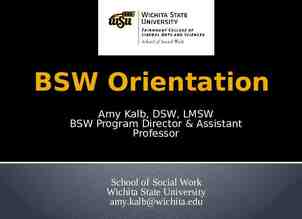How does the Beer Distribution Game help us to understand
11 Slides4.01 MB
How does the Beer Distribution Game help us to understand Humanitarian Supply Chains? David G Duddy Doctoral Researcher Dr Damian Stantchev Supervisor Dr Miles Weaver Supervisor
The Challenge The Elements of the Beer Distribution Game. Adapted from Forrester (1958). Humanitarian Supply Chain (simplified).
Methodology Case Study: Ebola Crisis, Sierra Leone, 2014 – 15 Primary resources – Observation – Interviews (WFP and MSF) – Evaluation reports (WFP and WHO) Secondary resources – E.g. Journal of Humanitarian Supply Chain Management International Journal of Physical Distribution and Logistics; – Conference papers – Books / publications
The Research Definition of ‘The Customer’ – The [Intelligent] Customer and The Beneficiary Commodity Control Interface – The Collaboration Envelope Customer / Consumer Interface – Where the demand is generated Humanitarian Supply Chain Management – Chain or network? Bullwhip Effect – The effect of Push Logistics, Pull Logistics and Local Procurement
The Commodity Control Interface and the Collaborative Envelope.
Humanitarian Supply Chain Complexity and Role of Local Procurement
Flow of materials including the reverse supply chain
Conclusions Bullwhip Effect in Push and Pull Logistics Customer v Beneficiary Contribution to knowledge Implication of this research
What Next? Humanitarian Supply Chain or Supply System How do the skill sets of humanitarian logisticians differ from those of commercial logisticians? Does formal governance exist in humanitarian supply chains and if not, does it need to? How could a conceptual framework combining skill sets and governance benefit the development of humanitarian supply chain management?
References Akhtar, P., Marr, N. and Gamevska, E. (2012), ‘Coordination in Humanitarian Relief Chains: Chain Coordinators’. Journal of Humanitarian Logistics and Supply Chain Management, Vol 2(1), pp.5-14. Forrester, J. W. (1958), ‘System Dynamics: A major breakthrough for decision makers’. Harvard Business Review, 36(4), pp.37-66. Lysons, K. and Farrington, B. (2006), ‘Purchasing and Supply Chain Management’. 7th Ed. Harlow, Pearson Education Ltd. MSF (2016), ‘OCB Review 2016’. Operational Centre Brussels, Médecin Sans Frontières, Supply Annex and Logistic Annex. Available at: http://evaluation.msf.org/evaluation-report/ocb-ebola-review-2016 [Accessed 2 Jun 17]. Nienhaus, J. (2002), ‘What is the Bullwhip Effect Caused By?’ Supply Chain World Europe 2002 Conference, 28-30 October 2002, Amsterdam. Oloruntoba, R. and Kovacs, G. (2015), ‘A commentary on agility in humanitarian aid supply chains’. Supply Chain Management: An International Journal, Vol 20(6), pp.708-716. Overstreet, R.E., Hall, D., Hanna, J.B. and Kelly Rainer Jr, R. (2011), ‘Research in Humanitarian Logistics’. Journal of Humanitarian Logistics and Supply Chain Management, Vol 1(2), pp.114-131. Tomasini, R. and Van Wassenhove, L. (2009), ‘Humanitarian Logistics’. Basingstoke, Palgrave MacMillan. WFP (2017) Summary Evaluation Report of WFP’s Ebola Crisis Response: Guinea, Liberia and Sierra Leone. Rome, WFP Executive Board Report WFP/EB.1/2017/6-B dated 17 Jan 17. Available at: http://documents.wfp.org/stellent/groups/public/documents/eb/wfp289348.pdf [Accessed 22 May 17]. Willetts-King, B. and Harvey, P. (2005), ‘Managing the Risks in Humanitarian Relief Operations’. Final Report. Humanitarian Policy Group, Overseas Development Instiute, DfID.
Questions David G Duddy [email protected]
















